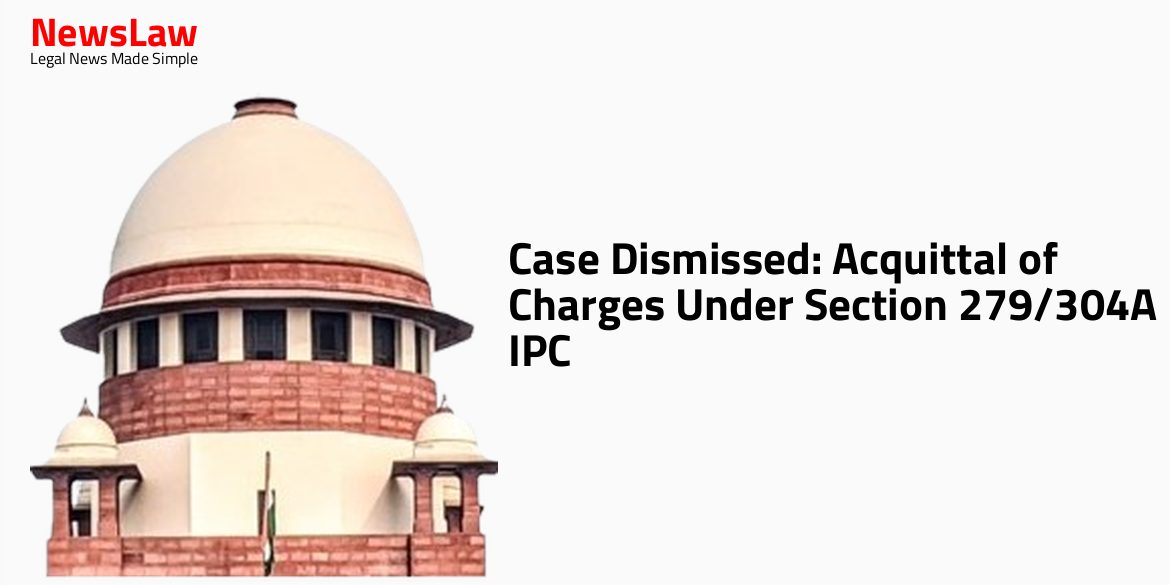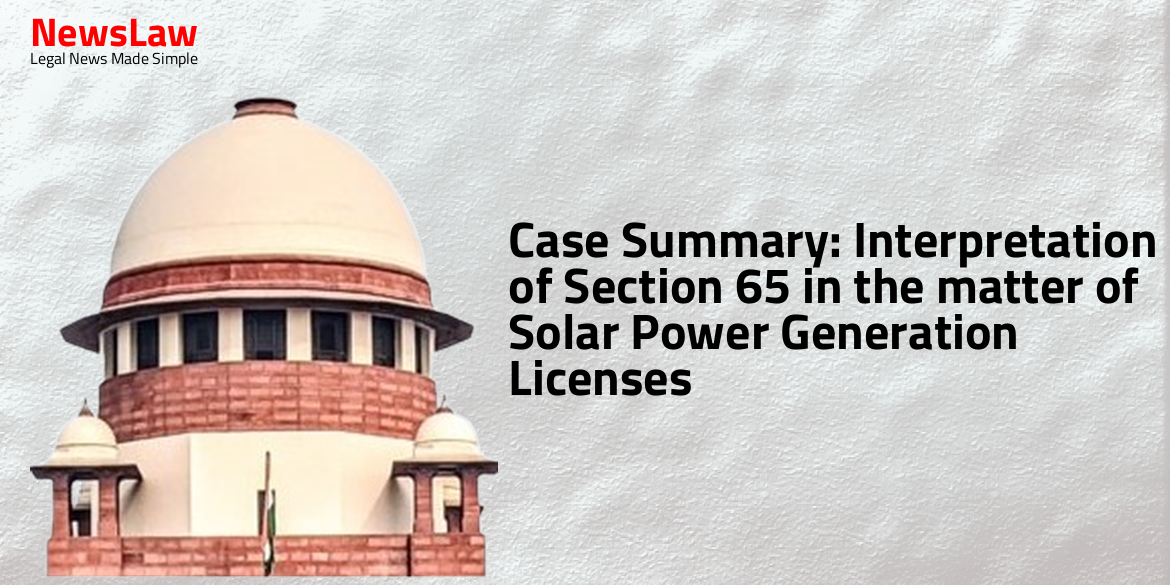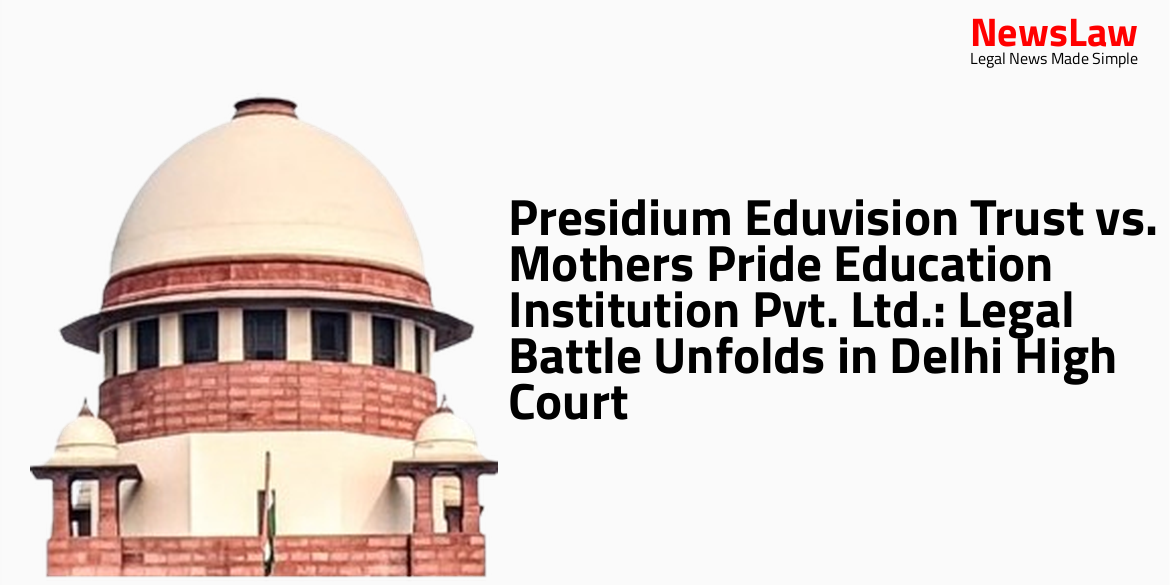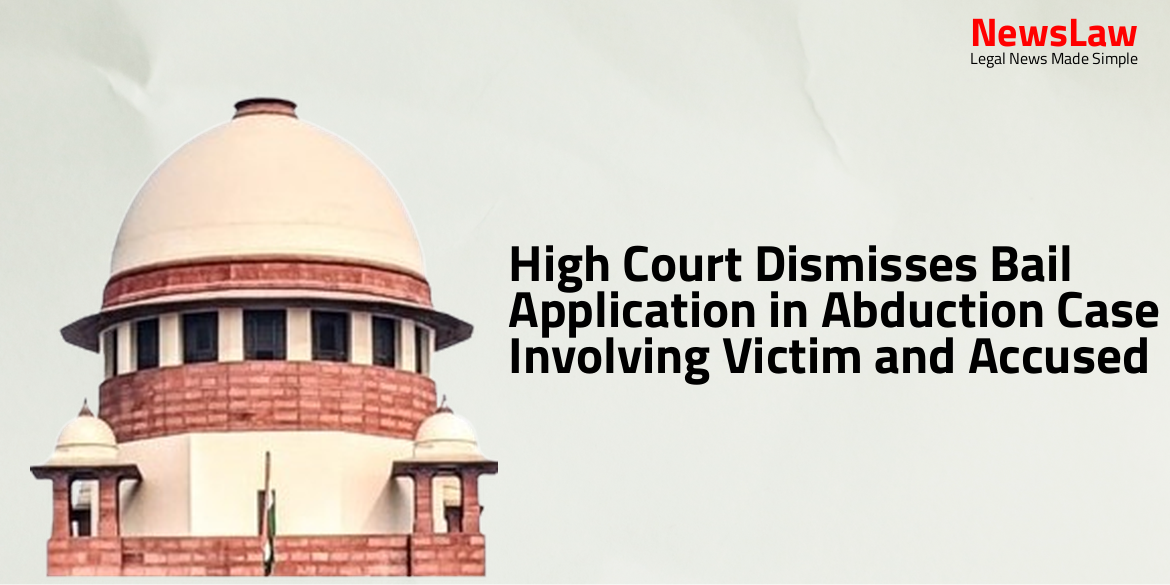In a recent judgment by the Delhi High Court, the case regarding charges under Section 279/304A IPC was dismissed, resulting in the acquittal of the accused. This decision follows a thorough examination of the case record by the Hon’ble Supreme Court. Stay tuned for more updates on this significant legal outcome.
Facts
- On 06.06.2004, information received at P.S. Chanakyapuri, New Delhi about a man lying in a blood-stained condition at Malcha Marg stand after an accident.
- S.I. C.L. Meena and Ct. Suresh reached the spot where PCR had already taken the injured to the hospital.
- Beat Constable Surender Kumar witnessed the pedestrian being hit by a Fiat car driven recklessly.
- Accused/petitioner apprehended with the help of Ct. Ompal at Panchsheel SP Marg red light.
- Investigation included collection of MLC of the deceased, mechanical inspection of the vehicle, site plan preparation, seizure of Fiat car, broken glass, and deceased’s shoes, and postmortem.
- 09 witnesses examined to establish the guilt of the petitioner including a forensic medicine specialist, eye-witnesses, and police personnel.
- Driver stopped the car after hitting the pedestrian, ran away, but was followed and apprehended.
- The appellant’s appeal against the judgment of the Metropolitan Magistrate convicting him for offences under Section 279/304A IPC was dismissed by the ASJ.
- The Metropolitan Magistrate had convicted the appellant and suspended his sentence upon furnishing a personal bond of Rs. 20,000/- with one surety.
- The ASJ upheld the conviction and the conditions set by the Metropolitan Magistrate.
Arguments
- Witness testimony by Rakesh (PW-5) stated a Maruti car was involved in the accident, while the petitioner’s car was a Fiat Uno, indicating a discrepancy.
- Absence of skid or tire marks at the scene questions the petitioner’s alleged rash and negligent driving.
- Site plan (Ex PW9/B) mentions the offending vehicle as a Maruti, not matching the petitioner’s Fiat Uno.
- State supports the conviction based on concurrent findings of Trial and Appellate Courts.
- Lack of evidence showing how the petitioner drove negligently when the deceased was crossing the road randomly.
- Cross-examination revealed that public witnesses at the scene were not involved in the investigation, weakening the prosecution’s case.
- Complainant’s statement lacks crucial details regarding the vehicle involved in the accident and the manner of driving, raising suspicions.
- Mr. Awnish Kumar appeared as the learned counsel for the appellant.
- Mr. Sourav Roy, Deputy Advocate General, represented the State of Chhattisgarh.
- The Hon’ble Supreme Court heard the arguments presented by both counsels.
- The court thoroughly examined the record of the case.
Analysis
- The evidence provided by witnesses PW-5 and PW-7 regarding the manner of driving of the offending vehicle was inconsistent and lacked detailed description.
- There was no clear establishment of ‘negligence’ or ‘rashness’ in the driving behavior of the accused beyond a reasonable doubt.
- The site plan did not indicate a zebra crossing or a traffic signal near the spot of the accident, leading to uncertainty about the circumstances.
- The term ‘high speed’ was not clearly defined or explained in the context of the case, raising questions about its significance.
- The prosecution failed to provide sufficient details about the driving conduct of the accused to categorize it under Section 304A IPC.
- Despite the vehicle being driven at a ‘high speed’, it did not automatically indicate negligence or recklessness as per the available evidence.
- The witnesses’ testimony did not establish a direct link between the accused’s driving and the occurrence of the accident with certainty.
- In the case of State v. Rajesh, it was emphasized that negligence can be established if the victim was hit while crossing the road at a zebra crossing with a red light.
- The judgment highlighted that what may be considered ‘rash and negligent’ driving behavior is subjective and may vary from one case to another.
- The court decision in State v. Rajesh resulted in the dismissal of the appeal and discharge of the bail bonds of the accused.
- Similarly, in the case of Kishore Chand Joshi v. State, it was pointed out that a witness can describe how a vehicle was driven but cannot provide a legal opinion on ‘rash and negligent’ driving.
- The absence of skid marks and tyre marks to prove high-speed driving behavior was noted to be crucial in determining rashness and negligence in driving.
- Driving at a ‘fast speed’ does not automatically equate to being ‘rash and negligent’ as per legal principles discussed in State of Karnataka v. Satish.
- The Court highlighted that there was no evidence of the vehicle being driven at a high speed or in a rash and negligent manner.
- PW-2’s perception of the vehicle being driven recklessly was noted, but not supported by concrete evidence.
- Absence of skid marks or tyre marks at the accident spot further weakened the prosecution’s case.
- Ultimately, the prosecution failed to prove beyond reasonable doubt that the accident was caused by the petitioner’s rash and negligent driving.
- As a result, the finding of guilt and conviction under Section 304A IPC could not be sustained.
Decision
- Petitioner’s Bail Bond and Surety Bond are discharged.
- The criminal revision is allowed resulting in the impugned judgment dated 12.09.2019 passed by the Court of ASJ, Special Judge – NDPS, Patiala House Courts, New Delhi in Crl. Appeal no. 10/2018 being set aside.
- The petitioner is acquitted of charges punishable under Section 279/304A IPC.
- The petition is disposed of.
- Dasti under the signatures of the Court Master.
Case Title: RAJESH KUMAR GUPTA Vs. THE STATE (2024:DHC:4418)
Case Number: CRL.REV.P.-988/2019



